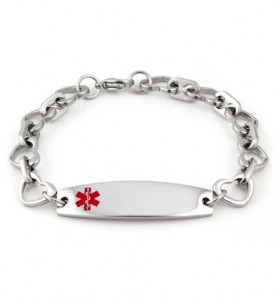1.) People with bleeding disorders do not bleed any more than those without bleeding disorders; they just bleed longer because their bodies are missing the necessary elements to form a clot. A simple cut will not cause a person with a bleeding disorder to bleed to death.
2.) People with bleeding disorders are just like everyone else. Aside from a few special medical needs and precautions, they can fully participate in a wide range of activities.
 3.) People with bleeding disorders can manage most of their care from home under the guidance of health professionals.
3.) People with bleeding disorders can manage most of their care from home under the guidance of health professionals.
4.)People with bleeding disorders should get a comprehensive check up from a hemophilia treatment center (HTC) once a year. A landmark Centers for Disease Control and Prevention (CDC) study found that people who received care in hemophilia treatment centers (HTCs) lived longer and were less likely to be hospitalized for bleeding complications that non-HTC users.
5.) Prophylaxis is the best therapy for individuals with severe hemophilia A or B (factor VIII [8] or factor IX [9] deficiencies). Break-through bleeds should be treated early and adequately!
6.) People with bleeding disorders should exercise and maintain a healthy body weight. Having strong muscles helps stabilize joints and can reduce the risk of injury and bleeds.
7.) Knowing and understanding the person’s diagnosis and treatment regime is important. Knowing the diagnosis and treatment regime is critical in order to clearly communicate needs of those of your loved one in an emergency.

8.) There is an education and support network through the local HTC or local bleeding disorder organization. There are many ways to connect with others living with bleeding disorders or caring for those with bleeding disorders. Please contact HANDI (1-800-42-HANDI; 1-800-424-2634) or handi@hemophilia.org to find out how you can become connected.
9.) Women can have bleeding disorders, too! Women with bleeding disorders take an average of 16 years between reporting symptoms to a clinician and subsequent accurate diagnosis. Learn the signs and symptoms to help reduce this lag time. The person with a bleeding disorder is the most important part of the treatment team.
10.) People with bleeding disorders should take an active role in managing their care. Work with your medical team to ensure that you understand all aspects of your care so that you continue to live a long and healthy life.
For more information visit STEPSforLIVING.hemophilia.org


